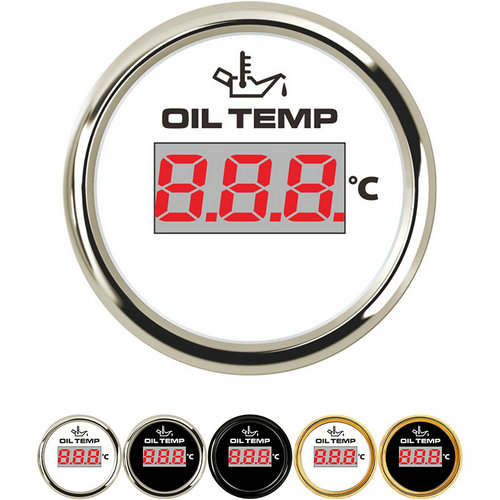oil temp gauge wiring diagram
1、 General rules of automobile wiring
Generally, single line system, parallel connection of electric equipment, negative grounding, lines are distinguished by lines and numbers with different colors, and divided into several trunk lines centered on the ignition switch.
1. Battery positive wire: lead directly from the battery to the fuse box, or lead directly from the battery positive wire to the positive terminal of the starter, and then lead the thinner positive wire to other circuits.
2. Ignition, instrument and indicator wires: the circuit can only be connected through the car key.
1. All electrical instruments are controlled by the ignition switch.
2. The meter head of each instrument is connected in series with its sensor, and the fuel gauge and water temperature gauge are generally connected with an instrument regulator.
The oil temperature gauge can be electronic or mechanical.
The instrument is installed directly on the instrument panel or suspended in the bracket under the instrument panel.
How the transmitter unit is installed in the oil pan depends on the type of instrument you have and your vehicle model. In some cases, the drip pan must be removed, a hole drilled and threaded to accept the adapter.
Other types use the drain plug in the oil pan as the installation position of the sender unit. Similarly, you may need an adapter to accommodate the sender.
Install the gauge into the hole and fix it. Most instruments have a fixed bracket, which is installed on the back of the instrument through two studs. Tighten the bracket fixing nut to firmly fix the instrument. Some instruments are simply glued to the surface of the instrument panel with rubber pads.If using an electronic meter, see wiring instructions. Connect the appropriate wires to the fused ignition control circuit, the side light circuit (for instrument lighting), and to ground. Route the transmitter unit wires through a convenient ferrule in the bulkhead and into the engine compartment.If a mechanical gauge is to be installed, the capillary must pass from the rear of the gauge through the bulkhead into the engine compartment. Drill a hole in the bulkhead and install a ferrule for the pipe to go through.
 English
English 




Get a Quote / Info